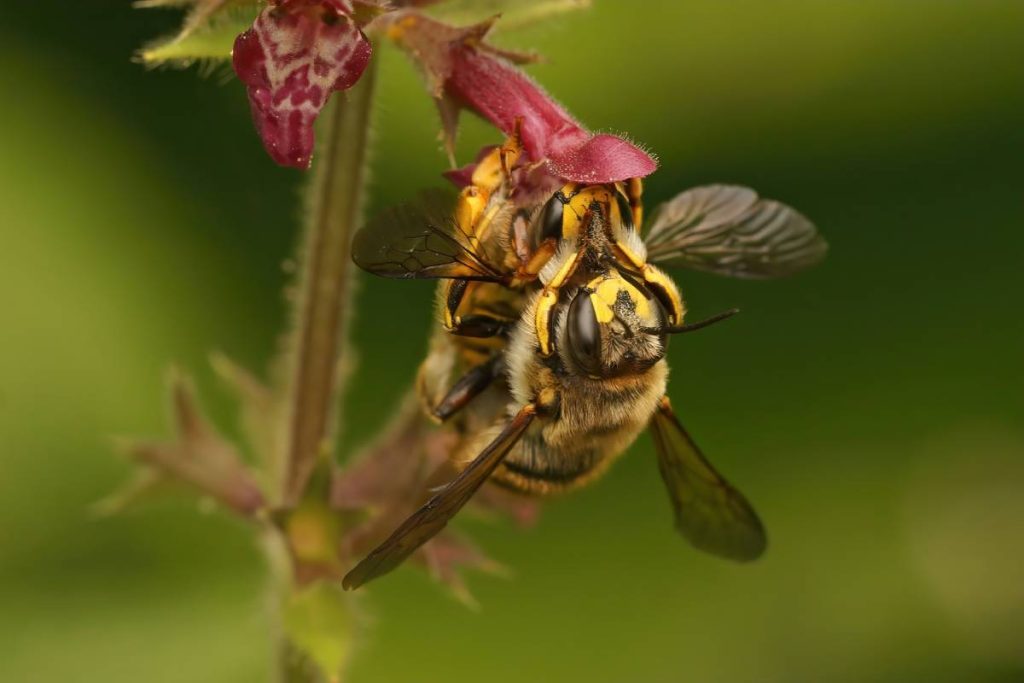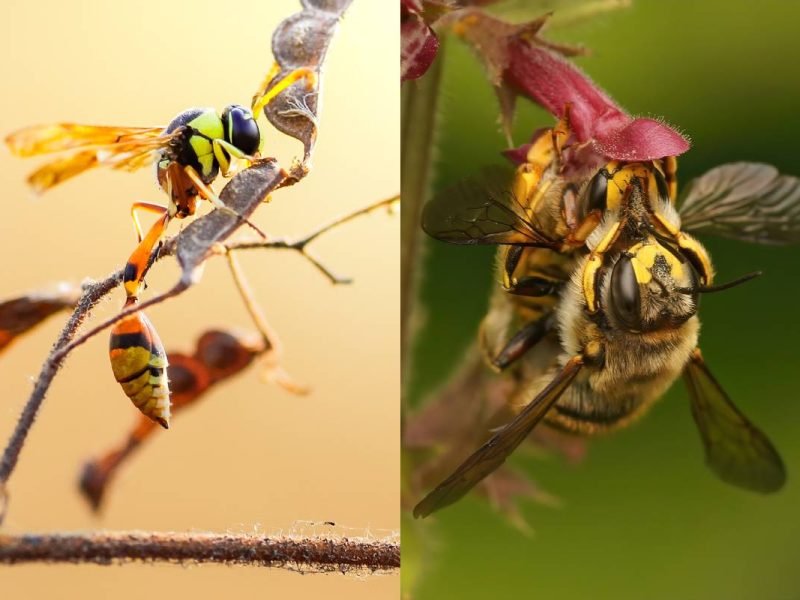Bees and wasps are often mistaken for one another due to their similar body structures and flying patterns. However, when it comes to stinging, their behaviour and capabilities differ significantly.
A common question many people have is: why can a bee sting only once while a wasp can sting multiple times? The answer lies in their anatomy, evolutionary adaptations, and survival mechanisms.
In this article, we will explore the biological differences between bee and wasp stingers, the reasons behind their stinging abilities, and the implications of their stings on both humans and the insects themselves.
The Anatomy of Bee and Wasp Stingers
The key factor that determines whether an insect can sting once or multiple times is the structure of its stinger. Both bees and wasps belong to the order Hymenoptera and have evolved to use their stingers as defensive or offensive weapons. However, the fundamental difference lies in the design of their stingers:
- Bees (specifically honeybees) have a barbed stinger.
- Wasps, on the other hand, have a smooth stinger.
Why Can Bees Sting Only Once?
The primary reason bees can sting only once is because of their barbed stinger. When a bee stings a target, the barbs on its stinger lodge into the skin. As the bee tries to fly away, its stinger gets stuck and is forcibly pulled from its abdomen, along with part of its digestive tract, muscles, and nerves. This causes severe injury to the bee, leading to its death shortly after stinging.
This self-sacrificial defence mechanism evolved mainly in honeybees, which live in large colonies and prioritize the protection of their hive over the survival of individual members. Since bees typically sting in defence rather than aggression, losing a single worker bee is a small price to pay for the security of the entire colony.
Why Can Wasps Sting Multiple Times?
Wasps, in contrast, have a smooth, needle-like stinger that does not have barbs. This allows them to sting repeatedly without losing their stinger or sustaining fatal injuries. The smooth stinger makes it easy for the wasp to withdraw and sting again if it feels threatened or is attacking prey.
Wasps are generally more aggressive than bees and use their ability to sting multiple times for both self-defence and predation. Unlike honeybees, which are mostly defensive creatures, many wasp species are hunters who paralyze their prey (often insects) with venom before consuming or feeding them to their larvae.

The Role of Venom: Bee vs. Wasp
Both bees and wasps inject venom when they sting, but the composition and effects of their venom vary.
- Bee Venom: Honeybee venom contains melittin, a compound that causes pain, swelling, and redness. It also contains enzymes that break down cell membranes and signal an immune response. Because a bee leaves its stinger behind, venom continues to be pumped into the wound for several minutes, increasing the intensity of the sting.
- Wasp Venom: Wasp venom is different in that it contains a mix of neurotoxins and histamines that cause pain, inflammation, and an allergic reaction in some individuals. Since wasps can sting repeatedly, they inject smaller amounts of venom with each sting but can deliver multiple doses quickly.
Behavioural Differences Between Bees and Wasps
The different stinging abilities of bees and wasps also influence their behaviour.
Bees: The Passive Defenders
- Honeybees are generally docile and will only sting when they feel their hive is threatened.
- Their main goal is to defend their colony, and they usually die after stinging.
- Other species of bees, such as bumblebees, have smoother stingers and can sting multiple times but are still not as aggressive as wasps.
Wasps: The Aggressive Hunters
- Wasps are more aggressive than bees and will sting if provoked, even without direct threats to their nest.
- Unlike honeybees, wasps do not die after stinging and can continue attacking their target.
- Many wasp species, like yellow jackets, are highly territorial and will defend their nest aggressively.

The Evolutionary Advantage of Stinger Design
The single-use stinger of the honeybee may seem like a disadvantage, but it actually serves an important evolutionary purpose. Honeybees live in colonies, and their collective survival depends on protecting the hive. A single sting is enough to deter many predators, and the pheromones released by a stinging bee alert other bees to defend the colony.
Wasps, on the other hand, are more solitary or live in smaller colonies. Their ability to sting multiple times helps them hunt and defend themselves in different environments. The smooth stinger design provides them with an advantage when subduing prey or warding off threats.
What to Do If You Are Stung by a Bee or Wasp
If you are stung by a bee or wasp, immediate action can help reduce pain and swelling:
For Bee Stings:
- Remove the stinger as quickly as possible to minimize venom injection.
- Wash the area with soap and water to prevent infection.
- Apply a cold compress to reduce swelling.
- Take an antihistamine if you experience an allergic reaction.
- Seek medical attention if symptoms worsen or if you have a history of severe allergic reactions.
For Wasp Stings:
- If you get stung by a wasp, first, clean the sting site with soap and water.
- Apply ice or a cold pack to reduce swelling and pain.
- Take over-the-counter pain relief if needed.
- Monitor for allergic reactions and seek medical help if necessary.
Conclusion
The difference between bee and wasp stinging abilities is a result of millions of years of evolutionary adaptation. Honeybees have barbed stingers that ensure they can effectively defend their hive, even at the cost of their own lives. Wasps, with their smooth stingers, can sting repeatedly, making them formidable hunters and defenders.
Understanding these differences not only helps us appreciate the complexity of nature but also informs how we react when encountering these insects. Whether you come across a bee or a wasp, respecting their space and minimizing provocation is the best way to avoid getting stung.






